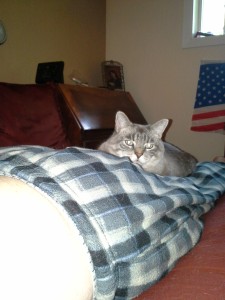Let’s kick off this week’s tips with three easy to implement tools to sizzle your scenes.Scene writing is more than just winding up a character and setting her in motion. Readers must be hooked and ready to invest in the story. Ready to take your scene-writing skills to the next level?
Writing Tip for Today: Here are 3 EZ ways to improve your novel’s scenes:
Get Another Character on Stage.
One of the most basic mistakes writers make is to introduce a character by keeping her alone on stage for too long, probably thinking about the past. The problem? Thinking is a solitary sport. It’s also inactive. While it’s fine to give your character lots of inner thoughts and emotions, by keeping your character “sittin’ and thinkin'” with no interactions, you lose the ability to show your character’s real struggles in real life. The Fix? Even if you can’t stand to leave out all of a character’s inner monologue, get another character onstage within the first few pages. The instant you do, dialogue is possible, and as we know, dialogue often leads to cross-purposes, which leads to conflict and tension. By forcing your character to interact with another person, the scene will move from the thought realm (where readers feel trapped if it goes on too long) to the real world, where readers can participate in the action.
Get Them Moving.
Speaking of action, get your characters moving. Take a look at your scenes. Do many of them take place around a table? If so, does dialogue seem to take over, crowding out most other scenic elements? The Problem? Kitchen table scenes are static. The most movement you get is to raise a cup to the lips or in mouths uttering their lines. If you plant your characters in a setting and then move only these limited ways, there’s a tendency to omit or downplay enriching things such as how the characters move in time and space, what their attitudes are about these movements and how they symbolize the larger scenic meaning. The Fix: Instead of plunking characters around a table, let them deliver their lines while doing something active. If possible let the characters’ attitudes toward this activity be opposing–that increases the tension and shows the difference between the characters’ goals.
Give Them A Goal.
And speaking of goals, make sure your scene and its character has at least one. The Problem? Many writers mistakenly believe all they need do is put their characters on stage and let “life” take its course. But the way real life unfolds often is aimless and random. The Fix: Instead of risking readers’ attention spans by letting your scenes wander through “life,” give your PROTAGONIST a specific goal (EX: She wants to convince her folks to let her date the school bad boy) as well as your ANTAGONIST (EX: Dad was a bad boy and wants to protect his daughter). The scene goal should be a slice of the STORY GOAL, like advancing a square on a board game.






Linda, other members of our Christian Poets & Writers group on Facebook will welcome this, so I’ll highlight in the Christian Poets & Writers blog – http://christianpoetsandwriters.blogspot.com. God bless.
As always, Thank you so much, Mary! We support one another and God does the rest. Bless you! ~Linda
Thank you for the advice, it is much needed and appreciated.
I do have a question though, In my novel I have two table scenes, but both have a lot of interactions and
sets a ‘family’ atmosphere. The adopted girl was found alone in a forest, starving.
Hi Rickey,
As long as your story moves forward somehow (secrets revealed, someone shoots another, stunning announcement or a starving person eats, for example) a table scene here & there isn’t going to kill the action. But do ask yourself in each scene: Am I setting it around a table for a valid reason, or is it easier to do this? It’s not “NEVER use a table scene,” but rather use them sparingly and for good reason. Thanks for your comment! Keep Writing! ~Linda
Thank you Linda!
You are welcome! Keep writing! ~Linda